The Drosophila ZNRF1/2 homologue, detour, interacts with HOPS complex and regulates autophagy
- PMID: 38360932
- PMCID: PMC10869362
- DOI: 10.1038/s42003-024-05834-1
The Drosophila ZNRF1/2 homologue, detour, interacts with HOPS complex and regulates autophagy
Abstract
Autophagy, the process of elimination of cellular components by lysosomal degradation, is essential for animal development and homeostasis. Using the autophagy-dependent Drosophila larval midgut degradation model we identified an autophagy regulator, the RING domain ubiquitin ligase CG14435 (detour). Depletion of detour resulted in increased early-stage autophagic vesicles, premature tissue contraction, and overexpression of detour or mammalian homologues, ZNRF1 and ZNRF2, increased autophagic vesicle size. The ablation of ZNRF1 or ZNRF2 in mammalian cells increased basal autophagy. We identified detour interacting proteins including HOPS subunits, deep orange (dor/VPS18), Vacuolar protein sorting 16A (VPS16A), and light (lt/VPS41) and found that detour promotes their ubiquitination. The detour mutant accumulated autophagy-related proteins in young adults, displayed premature ageing, impaired motor function, and activation of innate immunity. Collectively, our findings suggest a role for detour in autophagy, likely through regulation of HOPS complex, with implications for healthy aging.
© 2024. The Author(s).
Conflict of interest statement
The authors declare no competing interest regarding the publication of this paper.
Figures
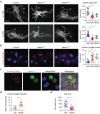
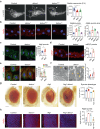
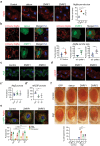
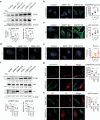
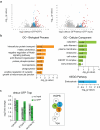
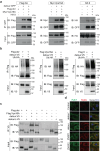

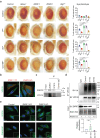
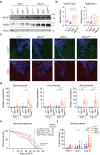
Similar articles
-
Interaction of the HOPS complex with Syntaxin 17 mediates autophagosome clearance in Drosophila.Mol Biol Cell. 2014 Apr;25(8):1338-54. doi: 10.1091/mbc.E13-08-0449. Epub 2014 Feb 19. Mol Biol Cell. 2014. PMID: 24554766 Free PMC article.
-
A dual function for Deep orange in programmed autophagy in the Drosophila melanogaster fat body.Exp Cell Res. 2006 Jul 1;312(11):2018-27. doi: 10.1016/j.yexcr.2006.03.002. Epub 2006 Apr 4. Exp Cell Res. 2006. PMID: 16600212
-
The nuclear cofactor DOR regulates autophagy in mammalian and Drosophila cells.EMBO Rep. 2010 Jan;11(1):37-44. doi: 10.1038/embor.2009.242. Epub 2009 Dec 4. EMBO Rep. 2010. PMID: 20010805 Free PMC article.
-
Ubiquitin signalling in Drosophila innate immune responses.FEBS J. 2024 Oct;291(20):4397-4413. doi: 10.1111/febs.17028. Epub 2023 Dec 18. FEBS J. 2024. PMID: 38069549 Review.
-
How a RING finger protein and a steroid hormone control autophagy.Autophagy. 2006 Oct-Dec;2(4):321-2. doi: 10.4161/auto.3091. Epub 2006 Oct 14. Autophagy. 2006. PMID: 16874068 Review.
Cited by
-
Identification of new candidates regulating autophagy-dependent midgut degradation in Drosophila melanogaster.Cell Death Discov. 2025 Apr 16;11(1):181. doi: 10.1038/s41420-025-02474-0. Cell Death Discov. 2025. PMID: 40240351 Free PMC article.
References
Publication types
MeSH terms
Substances
Grants and funding
LinkOut - more resources
Full Text Sources
Molecular Biology Databases
Research Materials

